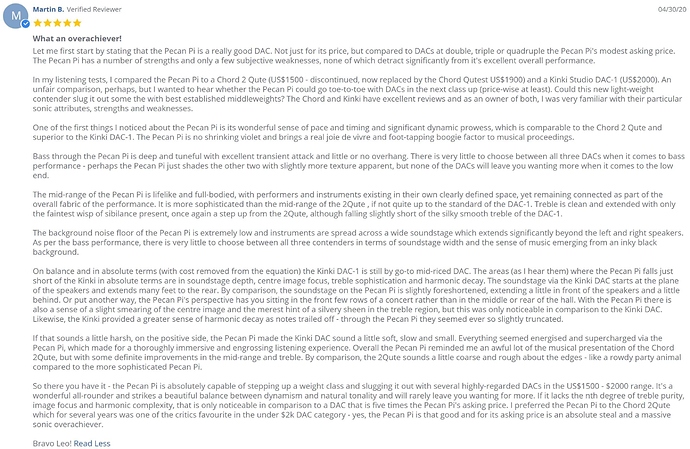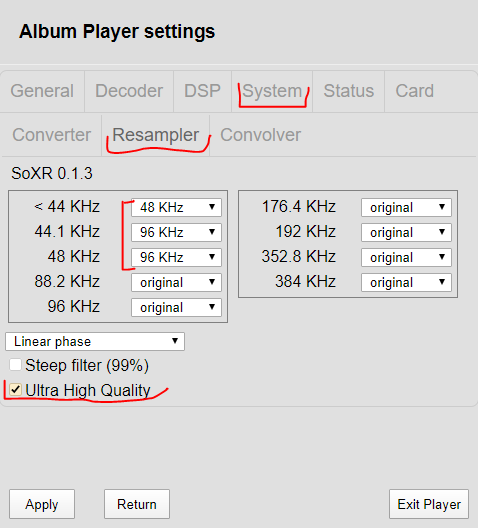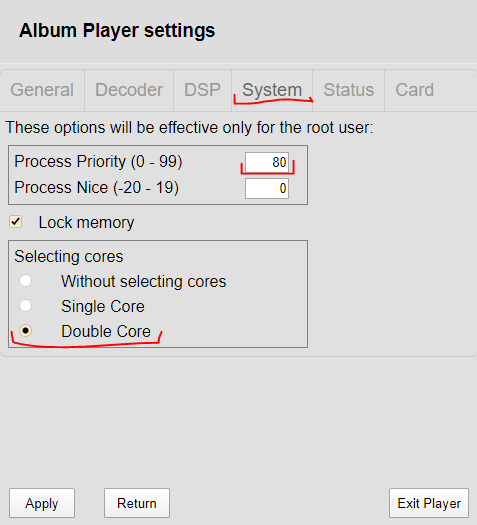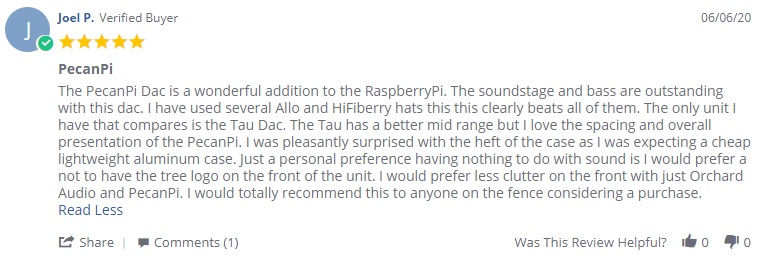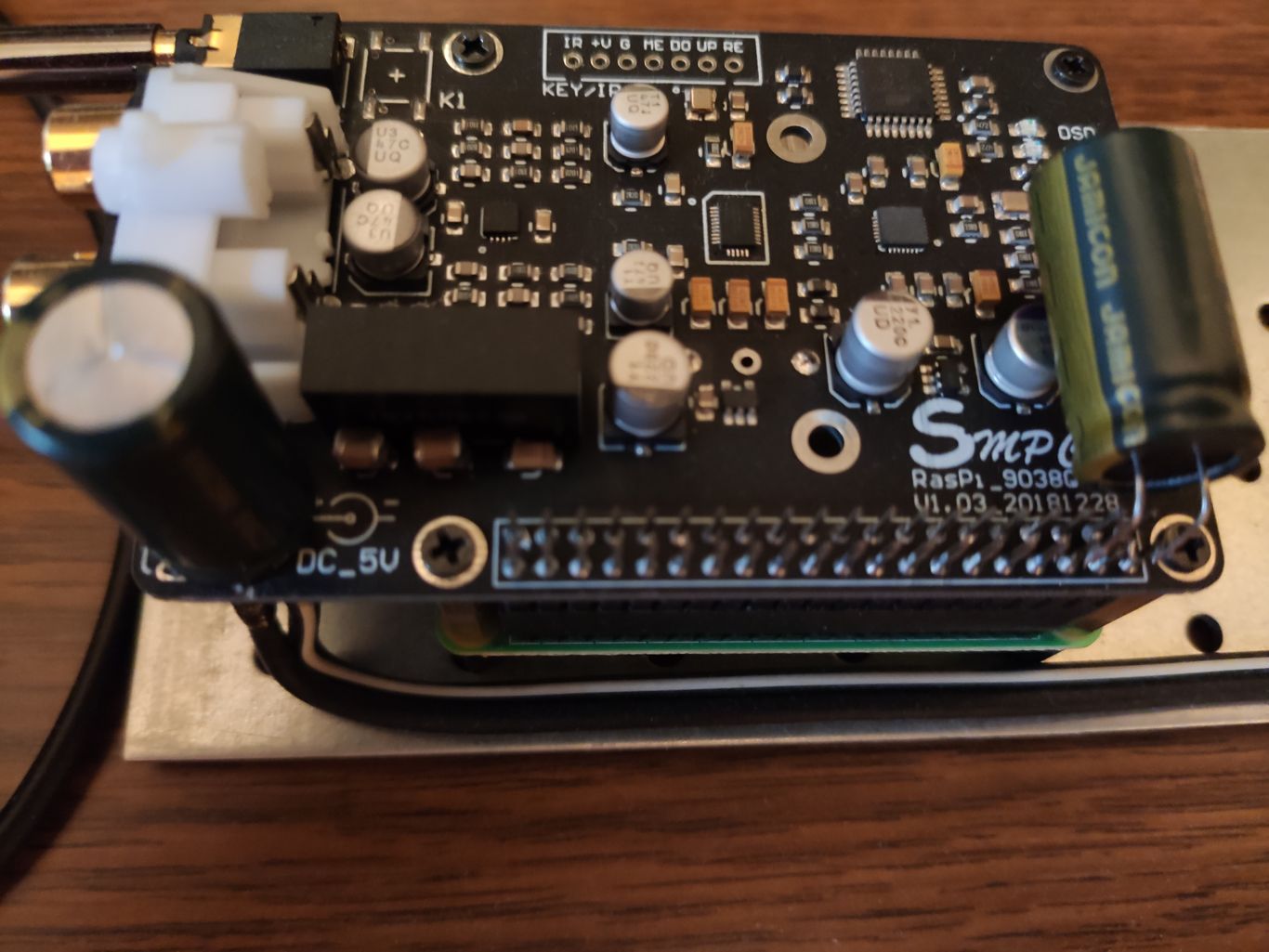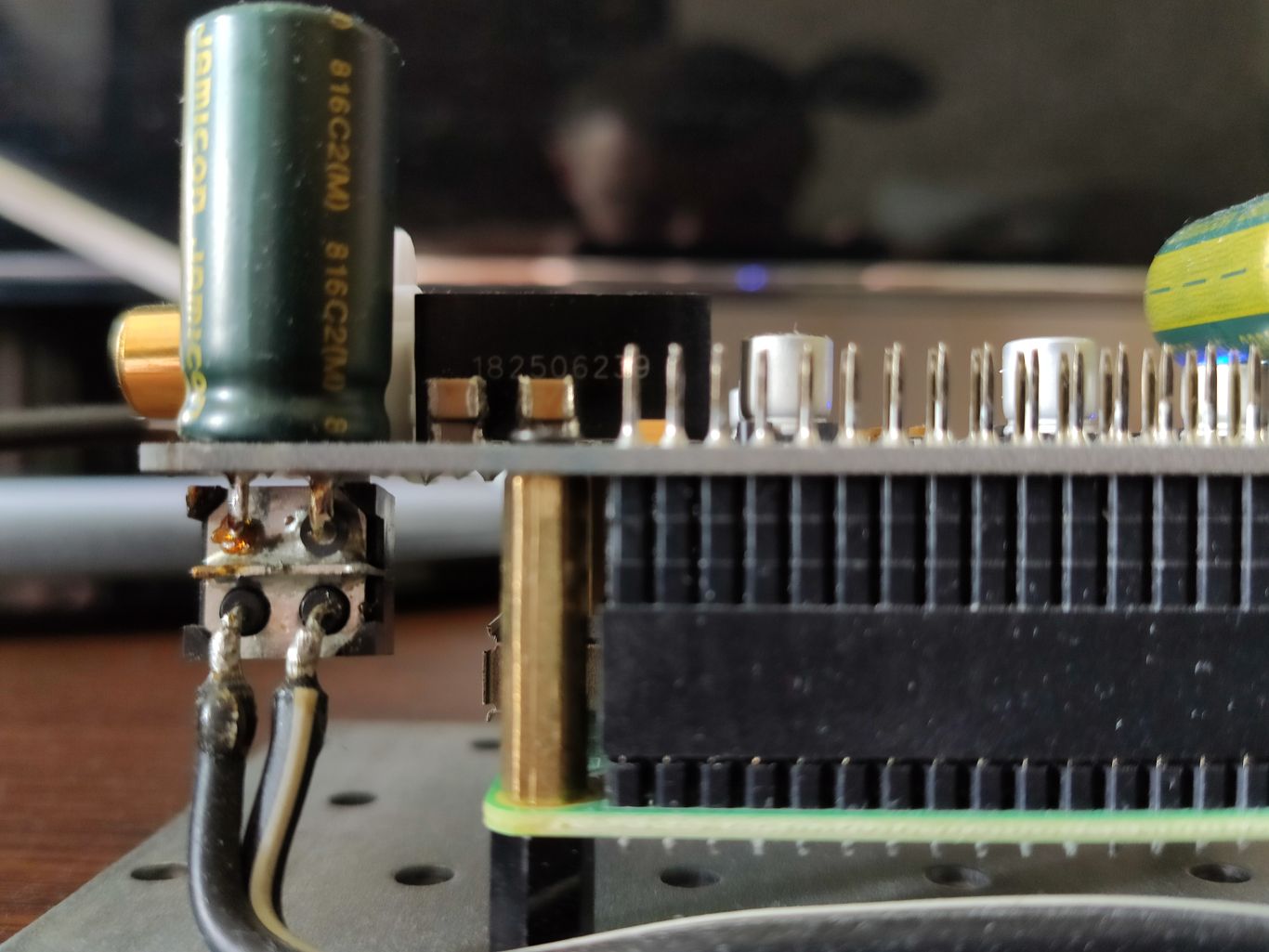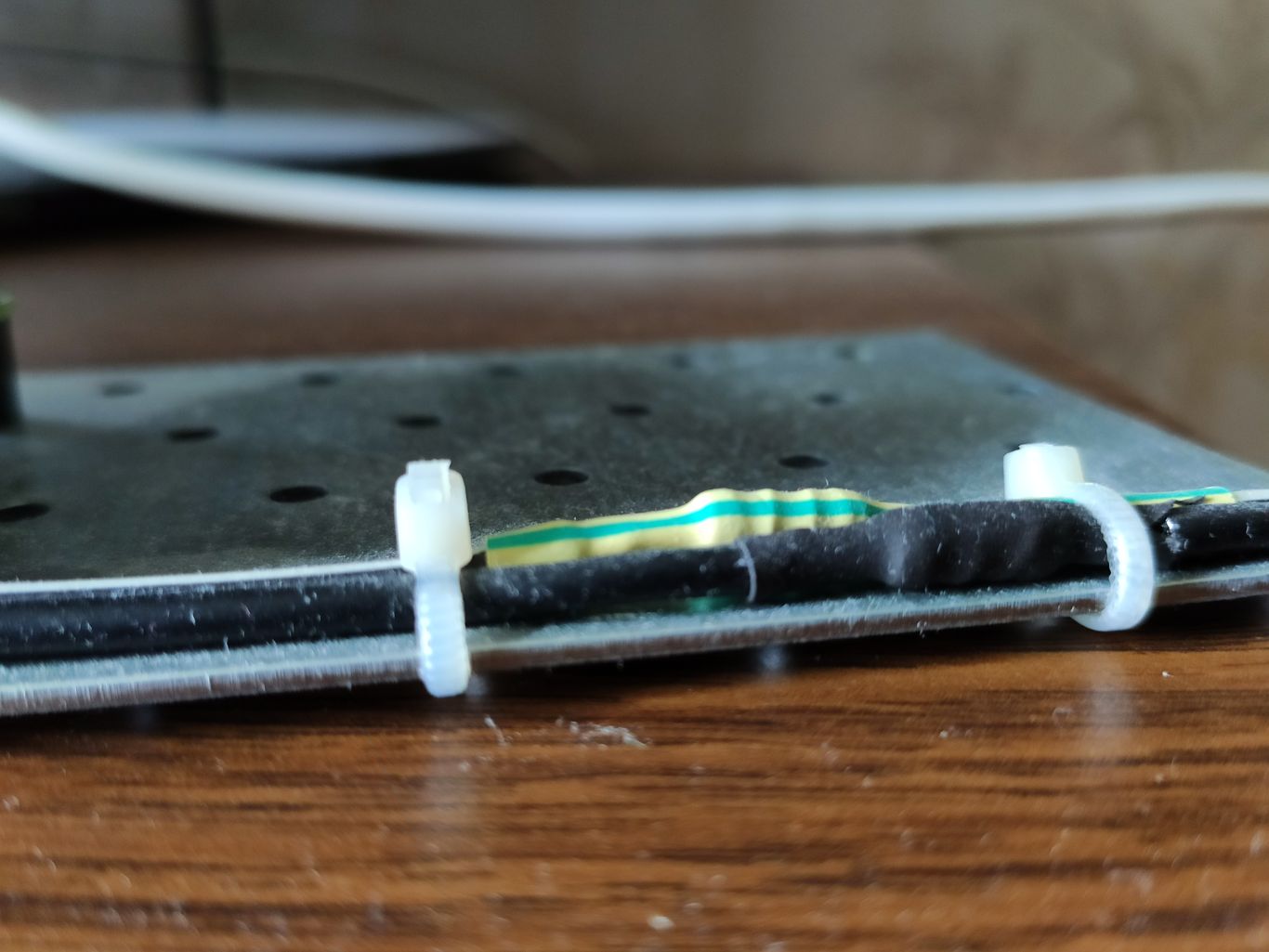А что там такого особенного?
Богатство выбора элементов, влияющих на результат:
- Плееры и рендереры;
- Привязка процессов к ядрам процессора малины;
- Несколько вариантов ядер операционной системы;
- Несколько версий ALSA.
Кого-то это может отпугнуть, а кому-то позволит получить интересный опыт и звучание.
В общем, по этому вопросу в профильной ветке имеет смысл черпать информацию.
А Вы ощущаете влияние релизов ALSA на звук?
Лично с ALSA не развлекался, использую самую свежую, т.к. сейчас мне всё просто нравится и хочется так и слушать.
Из личного опыта – влияние ядер ОС и распределения процессов плеера/рендерера по ядрам процессора очень заметно.
А ссылочкой не поделитесь? 
Спасибо!
В стиле “дальше сами”?)
Another great customer review…
Much more impressive than a sub-$500 unit has the right to be!
Wow! As an owner of three digital to analog music systems - the SOtM Ultra Trio, Allo’s Kantana with two TeraDak LPSs, and now Orchard’s PecanPi, it is amazing to me just how good the all in one end point units have become. Summary - The PecanPi is a no-brainer purchase for anyone looking to stream hi-resolution music to their stereo system. The Allo Kantana, the unit my PecanPi will now replace, was no slouch and an excellent unit in its own right…but, there are a number of things I like better about the PecanPi.
But before I go into a comparison between the similarly priced Allo Kantana and the PP, I have to disclaim the advantages the Allo Kantana had during this comparison (to an off the shelf PecanPi). a) The Kantana was powered with two TeraDak LPS (which added about $300 to the base cost). The PecanPi was set-up in its base form, which is what Leo recommends. When I bought my Kantana a year ago, purchase of external LPS was highly recommended and I can state 1st hand that the Kantana improved vastly with the addition of each of the two LPS units. The standalone Kantana was lifeless and blurred without LPSs. b) The Kantana was connected with a Kimber KCAG RCA interconnect during the comparison versus the PP equipped with a much less expensive/reviewed LFD RCA interconnect. NOTE: I can hardly wait to hear the PP with its native balanced XLR outputs.
My subjective, comparative impressions (and why I believe the PP is an incredible value):
- Soundstage - the sound stage thrown by the PP is incredible. Immediately noticeable and quite a benefit if you speakers cannot have optimal placement. With this, the depth of the stage and instrument separation seem to be more precisely placed. The Kantana had what I thought at the time was a great soundstage, but the PP was exceptionally better at this.
- Ease of listening and midrange delight - the vocals produced by the PP are easy, emotional, and delightful. While the Kantana has its own unique way of producing great sound and range, the PP is just more pleasurable to listen to over extended periods.
- Ease of set-up and support - this clearly goes to the PP without question. Set-up was simple, well-explained and for the single question that I had for Leo, my answer came within minutes. Allo support was coming from India and whilst it was not bad, it is a world of difference with Orchard Audio. My pontification on this subject is as follows - when one gets into the sub-$500 USD price range, the support for a complex digital component is not set-up to deal with individuals that lack a basic computer skill knowledge and ability to search forums and follow detailed instructions…a point my 26 YO continually reminds me of :). The PP is a unit that I could easily set-up and run. The Allo on the other hand, required considerably different skills and knowledge…that of a 26 YO CS Major.
- Build Quality - The PP comes in a self-contained steel enclosure that while quite light, is study and substantial when compared to the Allo Kantana’s plastic assembly. The Kantana feels fragile, exposed and flimsy by comparison to the PP. The Kantana is quite easily moved around by the weight of the wires and has exposed electronic parts. Both structurally and aesthetically the PP is an 9/10 and the Allo is a 4/10.
- Accessories - the PP is built with balanced XLR outputs and Orchard provides a pair of his proprietary RCA adapters for those requiring single ended inputs. Balanced is a big plus for me although all my listening to date has been single-ended RCA. Orchard provides a 3.5mm headphone jack for a very modest charge, allowing those who wish to use headphones to connect in.
I am really blown away with the quality, versatility, and sound of Orchard’s PP. It is a magnificent leap forward for digital audio and without question a steal at its price.
Please note: I paid for my unit, just like everyone else. My review here was just to provide my personal insights into affordable hi-end audio.
System used to evaluate (because this always comes up) - Roon Nucleaus Server streaming to PP with LFD Spiroflex single-ended interconnects + Allo Kantanta (w/2 TeraDak LPS). The units are connected to an LFD Mk IV SE integrated amplifier connected with LFD Grainless speaker wires to Meadowlark Kestral Hot Rod speakers.
На 44.1 эта шляпа звучит хуже?
Лично у меня складывается такое ощущение, что таки да, на частотах кратных 48кГц звучит приятней.
И есть ещё особенность на сборке Dimas`а – при старте воспроизведения на частотах 41,1-48 есть щелчок, которого нет при на частотах 88,2-96 и выше. Поэтому использую апсемплинг в APlayer и APRenderer до частоты 96кГц. Деградации звучания при этом не наблюдаю, щелчка нет.
Another great customer review:
“The PecanPi DAC is a wonderful addition to the RaspberryPi. The soundstage and bass are outstanding with this DAC. I have used several Allo and HiFiberry hats this clearly beats all of them.”
“ЦАП PecanPi - прекрасное дополнение к RaspberryPi. Звуковая сцена и бас выдаются с этим ЦАП. Я использовал несколько шляп Allo и HiFiberry, PecanPi явно превосходят их всех.”
Full review text:
Леонид большое Вам спасибо за интересную информацию!
Интересно было бы увидеть Ваши шляпы с SPDIF выходом?
В любом случае готовые решения расширяют аудиторию. Это хорошо.
ESS 9038Q2M в обвязке с питанием от 5В вызывает опасения. Сравнить бы с малинами и bluesound node 2i.
Как повлияло установка кондесатора на звук? Что то ещё дорабатывалось? У меня вроде такая же шляпа, вот и интересно.
На выход шимки-повышайки добавлено ещё керамики, вторым этажом, много, под потолок по даташиту. Стоит учесть что под поляризующей постоянкой ёмкость x7r x5r сильно уменьшается. На вход шимки тоже добавил, прямо в ноги, с другой стороны платы. Два электролита (3300мкФ 16в, low-esr) кроме локальной развязки питания для шляпы и малины, образуют вместе с двумя резисторами 0,1 Ом rc фильтр по линии питания, с частотой среза около 100Гц, резисторы впаяны чуть дальше в провод. Ну и мои любимые lc фильтры Мурата bnx, в данном случае 016-01. Блок питания импульсный, от старого КПК НР2210, малина короткая 3А+, поэтому профиль странный.
